
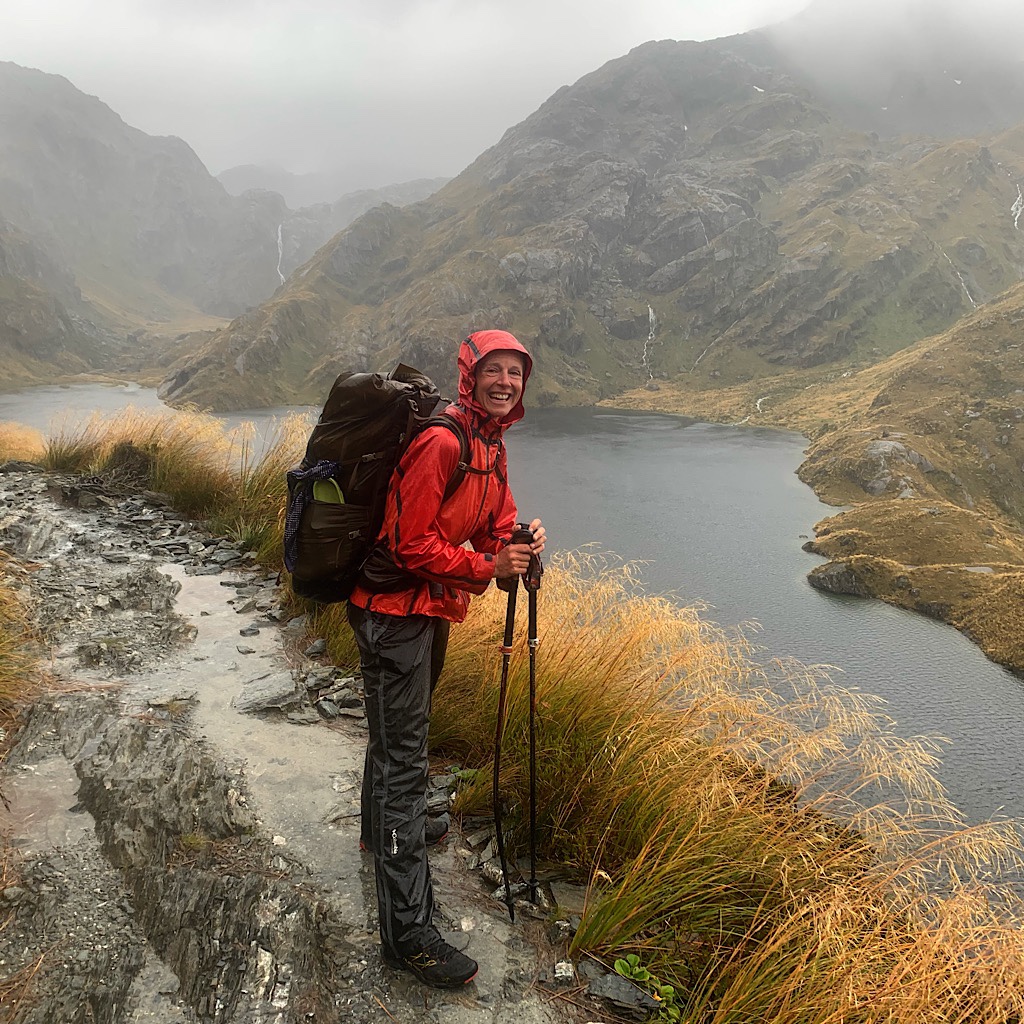
If you’re going to be outdoors for any significant amount of time, you are going to eventually get wet and if you plan to walk the Te Araroa, you will get very wet. I always carry sturdy rain gear on my thru-hikes. I know it’s a cardinal sin in the ultralite community, but on the TA, I saw a few trampers with minimalist gear shivering on the verge of hypothermia and I was glad I packed the full kit.
Obviously, top-notch waterproof gear that is also breathable is indispensable for hikers. It’s also hard to make. That’s because unless you’re a fisherman and want a heavy, 100% impermeable rubber coat that won’t allow water in – or out – you have to make some compromises.
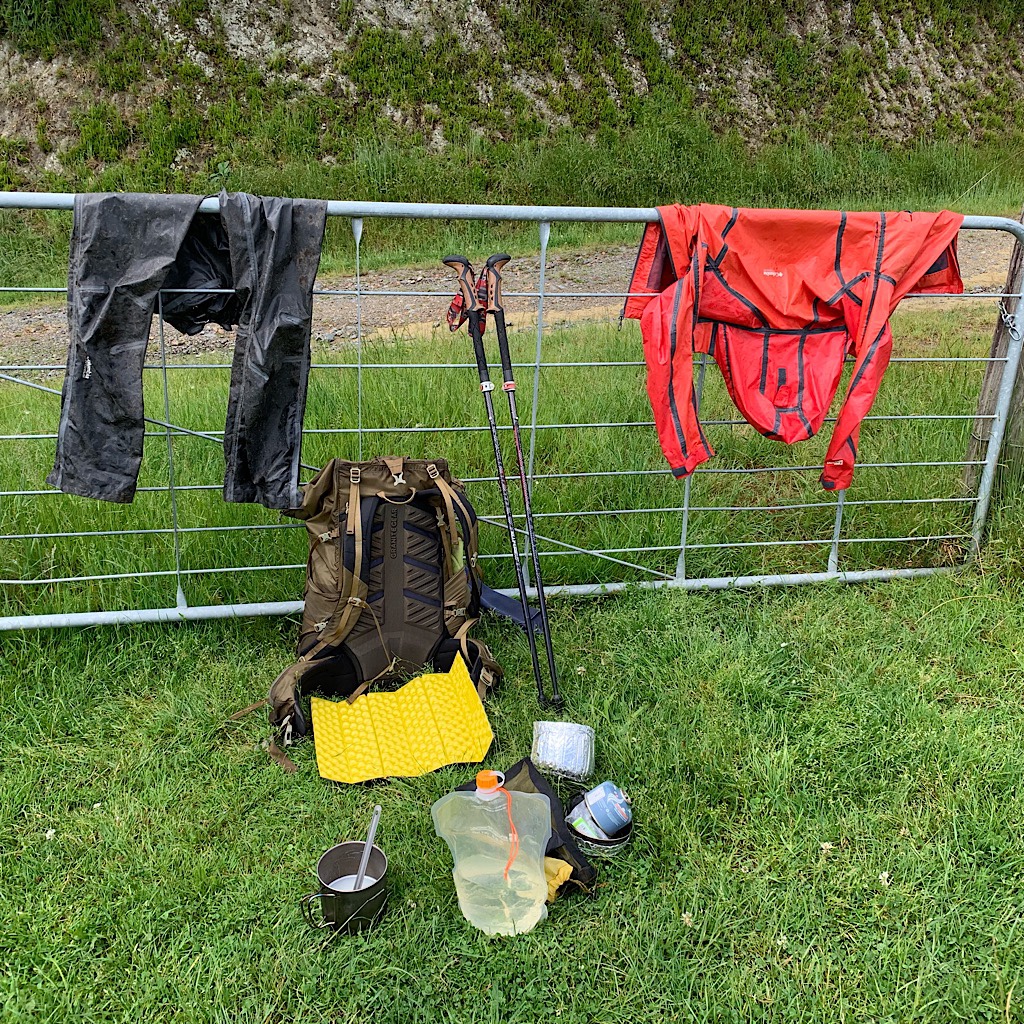
Gore-tex, eVent, and DryVent are some of the most popular fabrics for high tech rain gear available on the market. They use a layered construction of a waterproof/breathable membrane sandwiched between two pieces of fabric. For the most part, they are bomb proof in the outdoors. The only issue is that they use a durable water repellant, or DWR. It’s horrible for the environment because, like fluorocarbons and BPA, DWR is shown to be a hormone disruptor, breaking down slowly and accumulating in the blood and organs. It is definitely not good stuff to be wearing on your body. Worse yet, in order to work properly, DWR fabrics require multiple applications over time, and they never seem to repel water quite as well as when brand new.
In the last few years, Columbia’s Outdry system has joined the market. It’s of particular interest to me because Outdry does not use DWR. Rather the Outdry system places the watertight membrane on the outside – hence the name, out-dry. The membrane repels water while sweat evaporates through millions of tiny perforations, as well as through strategically placed zippered vents under the arm.
To be considered waterproof, a fabric needs to withstand at a minimum 10,000 milliliters of water before leaking. Outdry claims 20,000, while Gore-tex starts at 28,000. But Gore-tex – and all the rest – degrade with wear and abrasion, begin to soak up water and lose their breathability. Outdry does not, so it is waterproof for life by design.
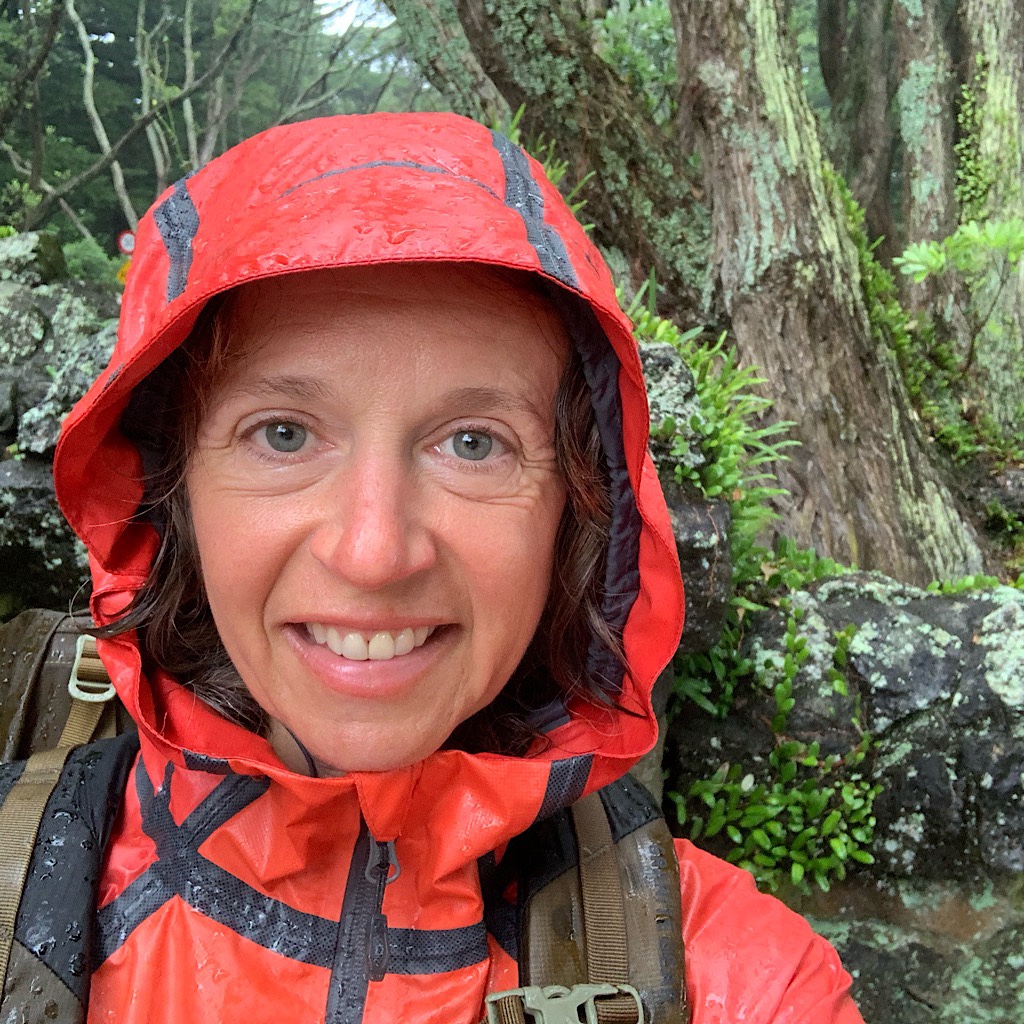
How Outdry worked on the trail is what you really want to know, so let’s start with how it felt. The jacket – and pants – have an entirely different feel to anything I’ve used before, kind of old-school “plastic.” That being said, they fit well, were comfortable enough and also packed just fine in Olive Oyl, taking up very little space.
The jacket is cut large and covered me below the hips and all the way down the arms. The pants run slightly short with my hiking trousers hanging out a bit. The jacket has two big mesh-backed side pockets, velcro writs-cuffs and elastic hem adjusters. The pants have two huge hip pockets and one large back pocket, mid-calf zippers and bottom snaps. The hood has a front brim without wire, rear velcro volume adjuster, and two elastic cords awkwardly placed inside the jacket’s lapels to adjust the hood size opening. All of the seams are taped on the outside to prevent leaks.
Water doesn’t bead on the Outdry the way it does on other high-tech rain gear, but the surface tension appears to be interrupted by the tiny perforations on the membrane. I stayed dry most of the time but there was one day when I walked the Routeburn Track that I began to soak to the skin. I was moving fast uphill and likely building up too much sweat to stay dry. The jacket does not seem to protect much from wind and I could have used one more layer that cold day.
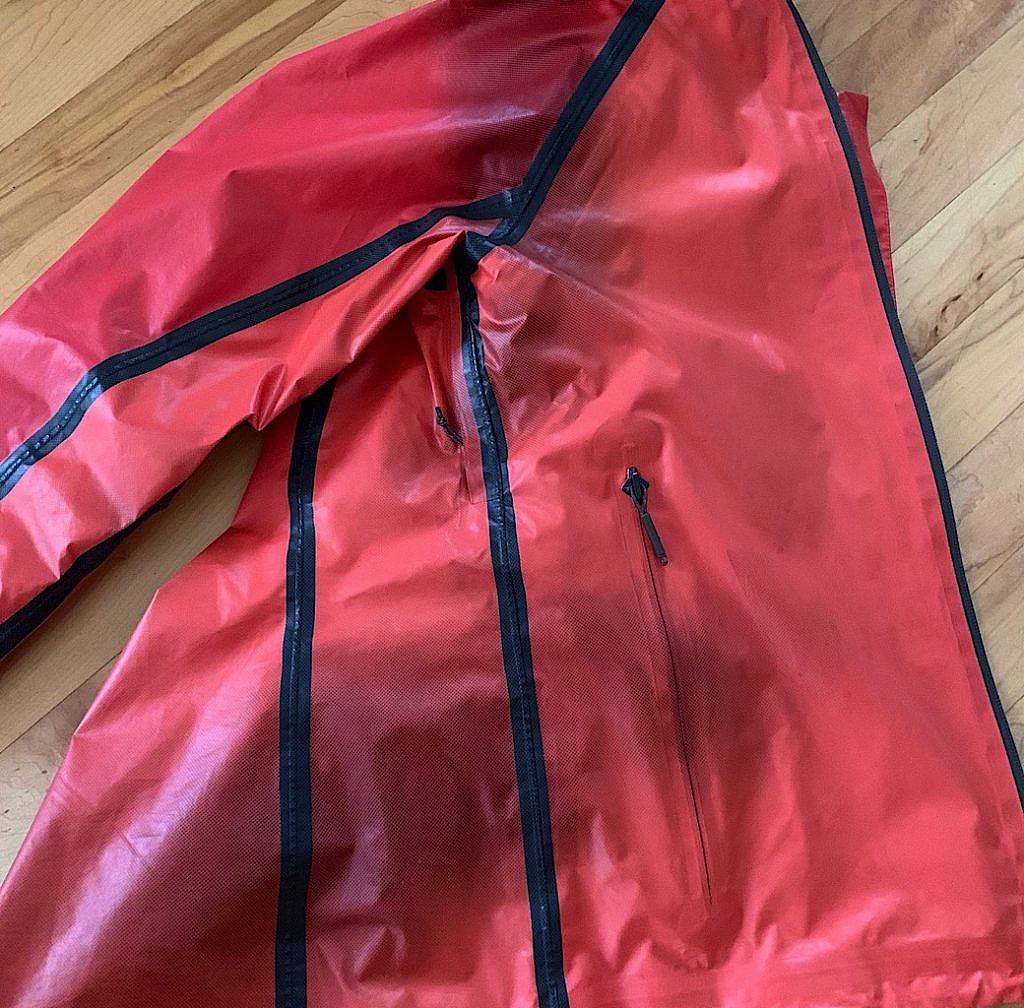
What impresses me on both jacket and pants are the zippers, which are high quality and close completely under a storm flap. I placed items in the pockets I could not get wet – like paper maps – and not a drop got in. The main jacket and pants zips are also reliable, surviving five months of punishment.
The biggest failure on the coat is the hood cinch. For me, it simply does not stay in place. The cord pulls tight and then locks into a notch along a small plastic tube. It pops out often, allowing water to splash my face and run down inside the coat. It’s not convenient to always be tightening the hood when my hands are occupied with trekking poles or keeping me steady along steep ascents and descents. The cut is also too big and creates a kind of scoop under the chin for water to find its way in. Since returning home, I have sent the jacket back to Columbia to see if there might be a way to fix this problem or replace the coat. We’ll see what they say.
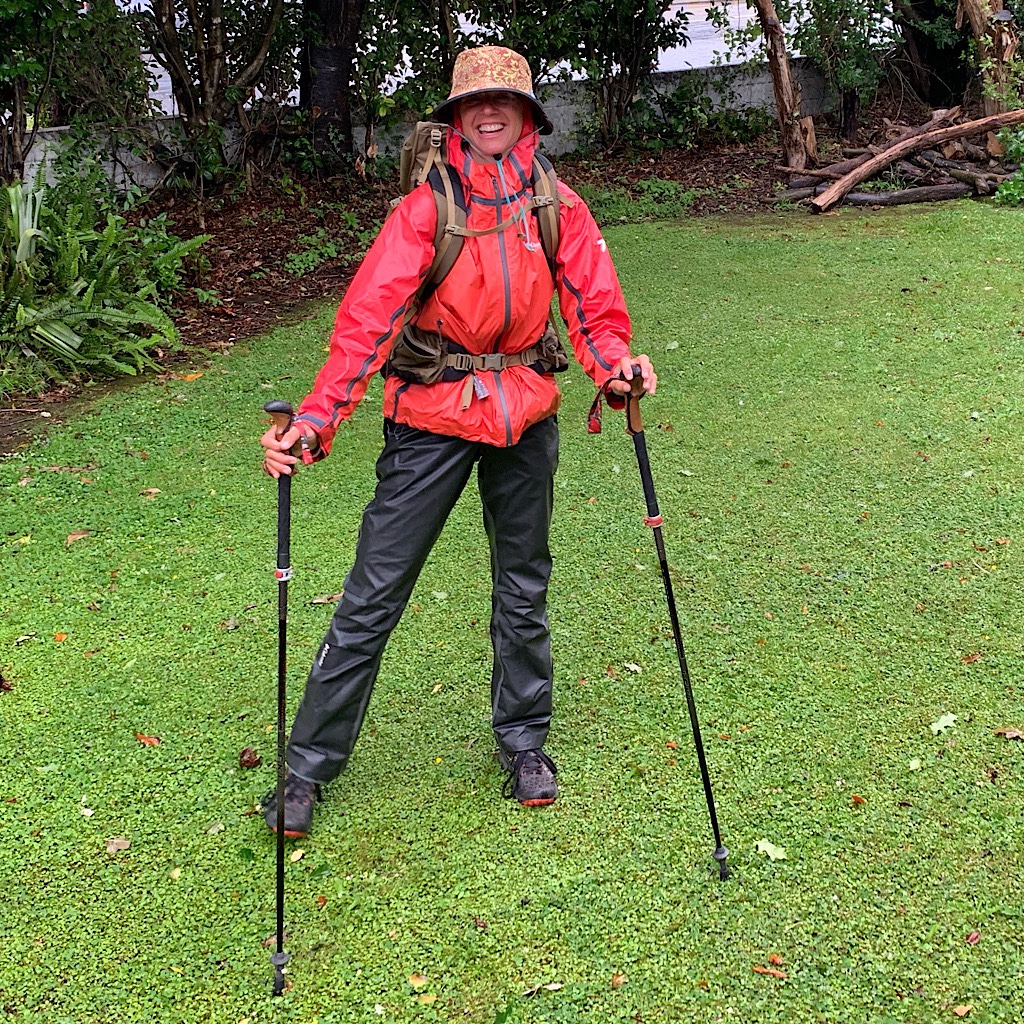
Backpacking is very hard on rain gear. The pants held up miraculously well and I wore them often even on sunny mornings when I needed to pack up a damp tent or walk in dew-filled grass. The jacket stained along the area where my backpack rubbed and I don’t know if this proved damaging to its performance. They both began to smell musty even when completely dry. Many of my hiking friends wore rain jackets underneath rain ponchos and used rain kilts instead of rain pants. The concept being these outer items are completely waterproof – kind of like wearing plastic bags – but since they fit so loosely, there’s no need for breathable fabric.
I likely won’t go that route and stick with a jacket/pants raingear setup for the future, although I want to ensure the hood cinch stays tight and that I’ll stay dry on long days of rain. I like the Columbia Outdry enough to plan to use it as a back up, therefore I give it three Anitas.

Pros:
- does not use DWR, environmentally friendly
- cut large and covers body
- durable and mostly waterproof
- well made zips
Cons:
- hood too large and does not stay cinched (note: Columbia replaced my coat and I have not had any problem with the new hood)
- breathability so-so
- musty smell even after thorough drying out


9 Responses
This post is five years old. Do you have any updates for someone about to take a 6 day bike trip in Portugal. temps 41-61
Hello Terry and thanks for your comment. I still use Columbia Outdry to this day, though a newer jacket, because I have unable to find a jacket that keeps me dry and doesn’t use PFAFS. It is a bit heavier and bulkier than others on the market.
Perhaps give it a try on this six-day bike ride? Here is the link to my gear closet. https://blissfulhiker.com/hike-diary/gear-closet/
Good luck! Blissful